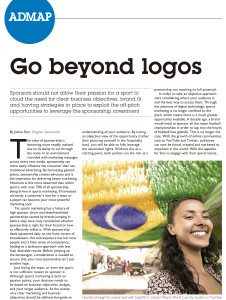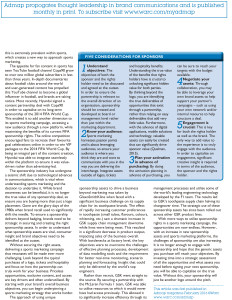
Teamwork Won’t Make The Dream Work
1st March, 2017
The next innovation in football sponsorship has arrived – more advertising space. Shirt sleeve sponsors will likely be on show from the start of the 2017/18 season and some reports have suggested that this space is valued at 20% of that of a main kit sponsor. Think of that what you will, but what is actually interesting about this revelation is the news that an agency has brokered an aggregated deal with up to ten Premier League clubs to sell this space to a single sponsor.
In a sport that generally divides, it appears a selection of Premier League clubs have decided to unite for a potential quick-fire commercial gain. This wouldn’t be the first time that one brand has been associated with multiple Premier League clubs, with brands such as Mansion.com, Dafabet, Europcar and bet365 currently spreading their allegiance, but a deal with ten clubs teaming up to take a share of the spoils would be a first.
In the EFL Championship earlier this year, 888sport launched an interesting partnership as the first main sponsor to simultaneously sponsor four teams (Birmingham City, Brentford, Nottingham Forest and Preston North End), which saw the company roll out a series of activities as part of the 888sport ‘Fans First Campaign’.
To add to this, Sure recently signed a multi-club sponsorship deal and became official partners with Premier League clubs Chelsea, Everton and Southampton, brokering an official ambassador from each team separately.
The difference with these two examples is that on each occasion the brand would have strategically selected their partners based on a multitude of commercial reasons, whereas the potential Premier League shirt sleeve deal with such a variety of clubs will arguably be far less strategic and unsustainable.
The type of brand to take up such an offer likely won’t be interested in the success of the teams’ performance or driving engagement with fans, but will simply look to capitalise on the Premier League media machine to significantly improve its brand awareness.
Whether a deal can be struck or not, only time will tell, but the real winners here will be the Premier League clubs who decide to commit their shirt sleeve sponsorship efforts into pursuing a long term strategic partnership with a brand.


